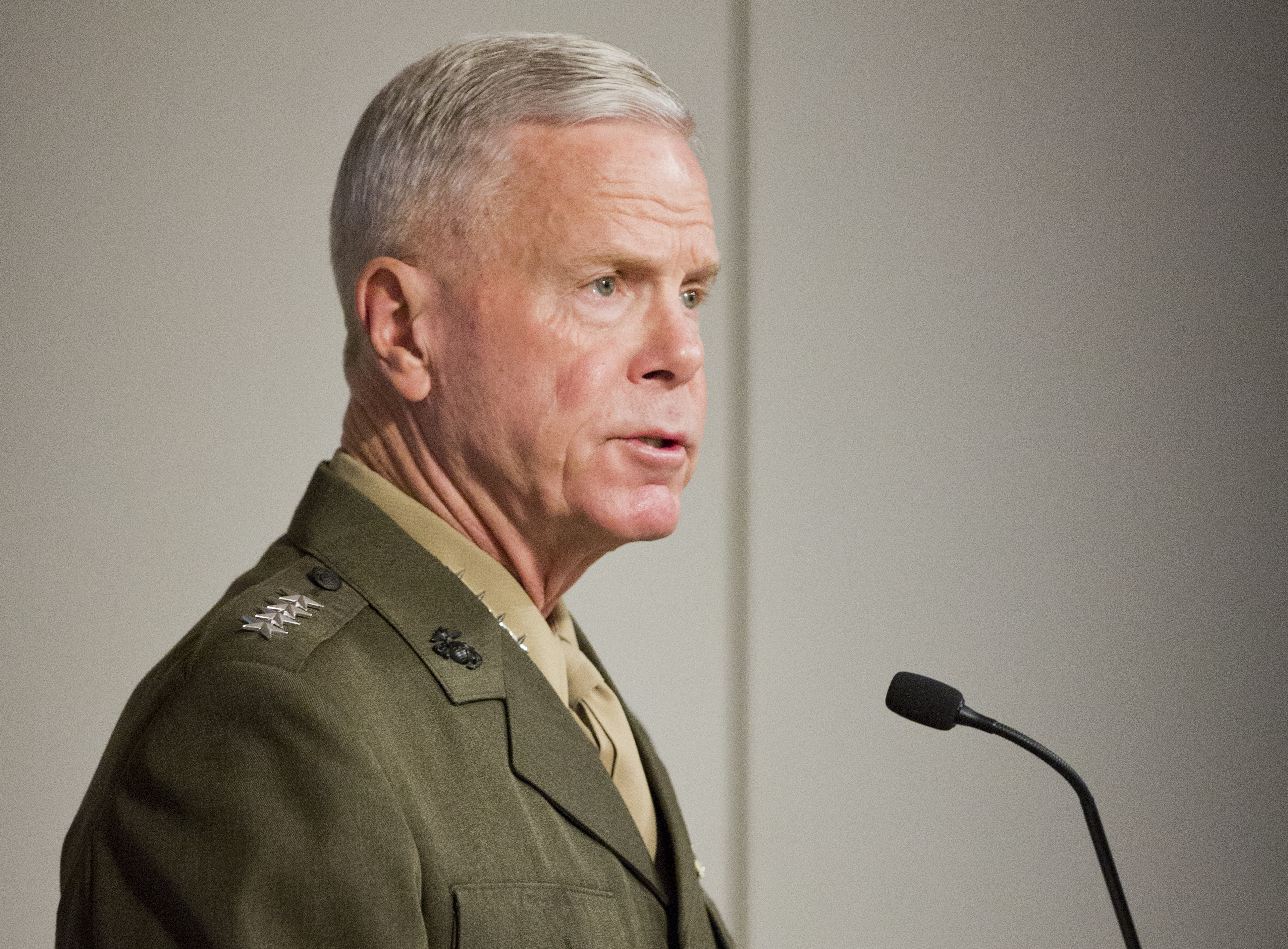
The Commandant of the Marine Corps described the June engine fire of an F-35 that caused the fleet’s grounding until Tuesday morning as probably a “one-off” incident.
Speaking at the Brookings Institution, a Washington think-tank, Gen. James Amos, an aviator himself, said 95 of 96 engines had been inspected by Monday and all but three were cleared. He said that he expected two of those to be cleared soon.
“It doesn’t mean [the engine fire] is not significant. It doesn’t mean we’re not going to pay attention to it.”
He added that “This is called developmental testing. . . . Everything, whether it be the Ford Pinto or whether it be the F-35B, went through developmental testing and they found things.”
Frank Kendall, under secretary of defense for acquisition, said recently the engine fire in an F-35A at Eglin Air Force Base, Florida, may have been caused by “excessive rubbing” of fan blades in the engine.
“We know what happened. We are just not sure why,” Amos said. “I’m optimistic, very optimistic about the future of the F-35.”
In February, the discovery of a crack in the engine of an F-35B caused the fleet to be grounded for a week.
The Marines’ F-35B is scheduled to reach initial operating capability in the summer of 2015. Amos, who is retiring this fall, said he expected the aircraft to meet that schedule.
Even though the fleet has been cleared to fly again under a new engine-inspection regimen, the F-35 will not be participating in the Farnborough Air Show in Great Britain this week, the Defense Department announced Tuesday afternoon. Rear Adm. John Kirby, Defense Department spokesman, said Amos made the decision.
At Brookings, Amos said the Marine Corps is planning for a return of sequestration with its across-the-board cuts in 2016. “I’m just not confident . . . that Congress is going to fix it.” In terms of end strength, that means a Marine Corps of 175,000, down from today’s 190,444.
Which in turn means tomorrow’s Marines will be spending less time at home—seven months deployed and 13 months at home station. “We were 1:1 at the height of the war in Iraq, and we did that for almost three years. The ideal deployment to dwell for reset family, just kind of getting your head back in the game is 1:3.”
The smaller force “is going to be a deploying Marine Corps” because “we’re the only service in the country that has the resources and the capability to be able to do some of this that others can’t.”
To pay for that high operating tempo and need for readiness of deploying units means continuing cuts for installation upkeep and support programs.
Amos said that those cuts and delayed spending could be sustained into 2017, and then his successor, Gen. Joseph Dunford, whose confirmation hearing is scheduled for Thursday, would have to make decisions on restricting operations and deployments.





